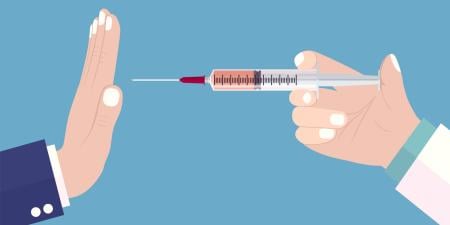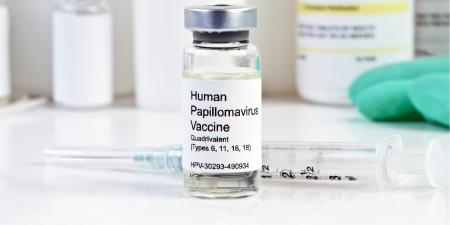Vaccine immunization has been at the center of a number of legal and ethical controversies, particularly over the last several years, with mandated vaccines for military workers and concerns about links to autism dominating the media coverage. In February 2011 the U.S. Supreme Court weighed in on a particularly important issue related to the safety of vaccines and recovery for injuries caused by them. Bruesewitz v. Wyeth wrestles with the tension between ensuring that companies can afford to produce vaccines, which are good for the many, and protecting and compensating the few who suffer from vaccine-related injuries [1]. The ruling on Bruesewitz shields vaccine manufacturers from certain legal liabilities—protections the Court believed were set forth in the National Childhood Vaccine Injury Act. Because it touches on safety, liability, and public interest, the case will certainly play an important role in future suits related to vaccines but also, potentially, other public health measures.
The National Childhood Vaccine Injury Act
The twentieth century saw the introduction of widespread vaccination and, consequently, the elimination of a number of communicable diseases, particularly in children [2]. Championing the success of vaccines, all 50 states have instituted laws requiring at least some vaccines as a condition of a child’s being enrolled in school [3]. In the 1970s and 1980s, however, as many communicable diseases were eradicated by vaccine, the public began to focus on the injuries caused by vaccines, leading to an increase in vaccine-related litigation. The total number of liability suits against vaccine makers rose from nine between 1978 and 1981 to more than 200 suits per year by the mid-1980s [4].
Fearing that this increased liability would drive vaccine manufacturers out of the market, Congress intervened in 1986 with the National Childhood Vaccine Injury Act (NCVIA) [5]. The act establishes a special court program for vaccine injury claims that caps damages and allows for the injured party to be compensated without having to prove that the maker committed any wrongdoing. Recognizing that even the best vaccines may harm some individuals but still serve the broader public, the court system is designed to limit liability for manufacturers (thus encouraging them to remain in the vaccine-making market), while ensuring that injured persons have a speedy and cost-effective mechanism for receiving compensation.
NCVIA establishes a Vaccine Injury Table of all possible types of vaccines, associated side effects, and timelines for experiencing side effects that may warrant compensation. If someone has suffered an injury that fits the criteria listed on the table, he or she does not need to prove that the vaccine caused the injury or that the vaccine was defective in some way [5]. Instead, the burden is on the government to prove otherwise [6, 7]. If the injury is not on the table, the injured person must prove that the vaccine caused the injury, as in a regular tort lawsuit. In either event, if the injured party wins, he or she can be reimbursed for medical care, rehabilitation, counseling, and vocational training expenses, diminished earning capacity, pain, and suffering. Surviving family members receive $250,000 if the vaccine resulted in death. If the case is not frivolous (meaning it has some serious purpose or value), all attorney fees are provided through the vaccine fund [8]. If the injured party does not wish to accept the judgment of the vaccine court, he or she can reject it and seek relief through the regular court system [7].
Damages are paid from a fund raised by taxes on vaccines, and manufacturers are generally shielded from liability so long as they comply with certain regulatory requirements and do not commit fraud, engage in criminal or illegal activity, or intentionally withhold information from the patient [9]. Manufacturers are not liable for any “unavoidable, adverse side effects,” the interpretation of which was the focus of the Bruesewitz case [9].
Bruesewitz v. Wyeth
In 1992, newborn Hannah Bruesewitz received a diphtheria, pertussis, and tetanus (DPT) vaccine from her pediatrician, in accordance with the vaccine schedule set forth by the Centers for Disease Control at the time [9]. The vaccine had been approved by the federal government in 1948, 1953, and 1970. Within 24 hours of injection, Hannah began experiencing seizures, more than 100 occurring in the first month alone. When Hannah reached her teens, she continued to suffer from seizure disorder and developmental delay [9].
Hannah’s parents’ first claim in the vaccine court in 1995 seeking recovery for their daughter’s injuries was unsuccessful because her injuries were not listed on the vaccine injury table [1, 10]. Mr. and Mrs. Bruesewitz then sued the manufacturer, Wyeth, outside of vaccine court. They lost, appealed, and lost again before the Supreme Court agreed to review the case.
Hannah’s parents argued that Wyeth was responsible for Hannah’s injuries because the vaccine was defectively designed by the manufacturer. The majority of the court concluded that a defective design claim is barred by the National Childhood Vaccine Injury Act and, thus, Wyeth was not liable for the injuries caused to Hannah. They interpreted the NCVIA to mean that all side effects, including design defects, are not subject to liability claims so long as “there was proper manufacture and warning” [11]. While lawsuits against other types of product manufacturers generally allow an injured party to sue for any of three problems (defective manufacture, inadequate warning, and defective design), the Supreme Court read the act as insulating vaccine manufacturers from the third claim (defective design).
Although the majority of the Supreme Court agreed with this opinion, two justices wrote a dissent that questioned the court’s interpretation of the National Childhood Vaccine Injury Act. These justices argued that the majority’s view removed a previously existing legal duty of vaccine manufacturers “to improve the designs of their vaccines in light of advances in science and technology.” Examining the legislative history and text of the statute, these justices believed that vaccine makers should be exempt from liability only if the vaccine was properly manufactured and labeled and if the side effects of the vaccine “could not have been prevented by a feasible alternative design” that did not “comprom[ise] the vaccine’s cost and utility.” The majority discounted this view, arguing that Food and Drug Administration (FDA) regulations still applied to regulate the safe manufacturing of vaccines.
Wider Implications of the Ruling
The ruling in Bruesewitz has some important implications for future vaccine cases and public health interventions more generally. Note that the Bruesewitz decision was not calling into question whether a no-fault type of court was appropriate for public health interventions, like vaccines. Instead, the judges were debating what grounds still remained for a person injured by a vaccine to be compensated. The majority’s holding will certainly make additional legal cases against these companies more challenging, as vaccine manufacturers are now not liable for failing to improve vaccine designs and defects, unlike manufacturers of other products.
If applied broadly, the Supreme Court’s holding could also draw important new standards for public health interventions. The scope of the Bruesewitzcase is limited in that it applies a specific statutory requirement for vaccines only. However, to the extent that the Supreme Court prioritized the need to promote public health (and thus financial incentives for health care goods manufacturers) over the need to protect individual health when it insulated health care products manufacturers from liability to update and modernize their technology, this holding could have far-reaching implications for other public health interventions and legal claims in the future.
References
-
Bruesewitz v Wyeth, 131 SCt 1068 (2011).
-
Centers for Disease Control and Prevention. Impact of vaccines universally recommended for children--United States, 1990-1998. MMWR Morb Mortal Wkly Rep. 1999;48(12):243-248.
- Grey BJ. The plague of causation in the National Childhood Vaccine Injury Act. Harv J on Legis. 2011;48(2):349-350.
-
Bruesewitz, 1072-1073.
-
The National Childhood Vaccine Injury Act, 42 USC section 300aa 1-34 (2007)
-
17 Am Law Rep Federal 2nd (West Group Annotation) 17 (2011).
-
Grey, 354-356.
-
Bruesewitz, 1073-1074.
-
Bruesewitz, 1074.
-
Wexler S. Bruesewitz v. Wyeth: the “unavoidable” vaccine problem. Duke J Constitutional Public Policy Sidebar. 2011;6:94-95.
-
Bruesewitz, 1075.



